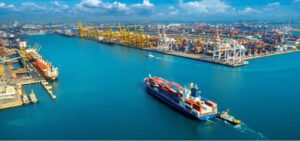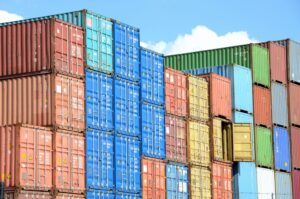Mayur Chhabra delves into how IoT, blockchain, and AI are revolutionising multimodal logistics. He also addresses challenges like visibility and paperwork, sharing solutions such as solar-powered GPS devices, and discusses future trends in logistics.

Technologies like IOT, blockchain, and AI are reshaping the industry
Mayur Chhabra, Head, Supply Chain (Paints & White Cement Division), JK Cement, offers valuable insights into the evolving landscape of multimodal logistics. In this article, he explores how cutting-edge technologies like IoT, blockchain, and AI are reshaping the industry. Chhabra highlights the shift from traditional paperwork and spreadsheets to advanced real-time tracking and automated inventory management. These technological advancements are crucial for enhancing visibility, control, and efficiency across the supply chain, making operations more seamless and benefiting the logistics sector significantly. His expertise sheds light on the transformative impact of these innovations.
Addressing challenges
Implementing multimodal logistics can be challenging due to visibility issues and extensive paperwork during transfers. To tackle these problems, solar-powered GPS devices with international roaming SIM cards have been introduced. These devices, which charge via solar power, provide real-time tracking of inventory across various transportation modes, including rail, road, and sea. This solution improves visibility and reduces paperwork, enhancing overall efficiency in multimodal logistics.
Future trends
Multimodal logistics is poised for significant transformation, driven by several key trends. The trends shaping the future of multimodal logistics include increased collaboration and visibility, digitalisation, data analytics, sustainability, and standardisation. These developments promise to enhance efficiency and integration across the supply chain. As these trends mature, they are expected to make multimodal logistics processes more seamless and streamlined, significantly impacting global supply chains and the logistics industry. While progress is ongoing, the advancement of these technologies and practices will drive greater efficiency and effectiveness in logistics operations.
Best practices for seamless multimodal logistics
To ensure smooth integration and coordination among various transportation modes—air, sea, road, and rail—selecting a reliable partner with comprehensive end-to-end solutions is crucial. Look for providers offering real-time updates through customer portals, which enhance visibility and management. Evaluating vendors using a balanced scorecard approach can help identify the best fit for your needs.
Common misconceptions about multimodal logistics include concerns over visibility, long lead times, in-transit damages, and excessive paperwork. These issues can be addressed through government intervention and the establishment of effective multimodal logistics policies. Overcoming these misconceptions will lead to more efficient and streamlined logistics operations.











